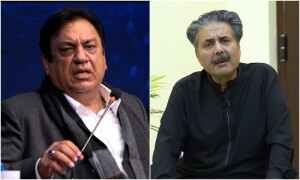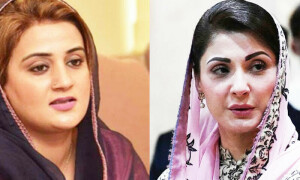
IN the delimitation of constituencies undertaken before the general elections of 2002, the Khyber Pakhtunkhwa district of Battagram was given one national seat for a population of 307,278 (1998) while district Haripur, located in the same division, Hazara, too got one seat for its 692,228 residents. This means that 225 voters in Haripur district were given the same value as 100 in Battagram. In other words, a vote in Haripur had less than half the value, in terms of representation in parliament, than that of one in Battagram.
The problem was not limited to these two constituencies as the population of 36 constituencies exceeded the national average for a seat by more than 10 per cent while for another 42 it was below that mark by 10pc or more.
The inequality of votes is a direct consequence of drawing up unequal constituencies. It is certainly not desirable as it negates the principle of equal suffrage but can the electoral constituencies be equalised?
To begin with, the problem is not unique to Pakistan. Various countries have experimented with different solutions. The most popular among these is to set a limit on how far an individual constituency may diverge from average or a set quota number. The European Union has set it at 10pc while the UK narrowed it to 5pc under the Constituencies Act 2011. Pakistan’s new election law, the Elections Act 2017, has also followed this lead and says that “as far as possible, variation in population of constituencies of an assembly or a local government shall not ordinarily exceed 10pc” (Section 20.3).
The inequality of votes is a direct consequence of drawing up unequal constituencies.
This is a new condition that will pose additional challenges to the delimitation authorities this time around. It may not seem to be problematic on the face of it but when combined with other principles that too have to be followed, the situation becomes complicated.
The most important of these principles is that no constituency shall be cross-district, that is, the area covered by it shall not fall in more than one districts. The Election Commission has been following it religiously in previous delimitations. In the last delimitations, there was only one national constituency (NA-25 Dera Ismail Khan cum Tank) that violated this principle. The creation of new districts and changes in boundaries of districts after the delimitation, however, converted a number of constituencies into cross-district ones. For example, NA-222 Hyderabad 5 of elections 2002 became NA-222 Tando Mohammad Khan cum Hyderabad cum Badin in later elections though it continued to cover the same geographical area.
Now the boundaries of existing multi-district constituencies will have be adjusted to make them fall within one district. As prescribed in the Elections Rules 2017, the Election Commission will distribute whole number of seats to each district of a province. But the populations of districts are, of course, not exact multiples of the quota or average resulting in fractional shares which then have to be rounded off.
For example, under the new delimitation, the share of Sheikhupura district in national seats will be 4.4 while that for Nankana Sahib will be 1.7 and rounding off will result in four whole seats for the former and two for the latter. But dividing these districts in four and two constituencies will result in constituencies of unequal population. The average population of a Sheikhupura constituency will be 865,107 that will exceed the average by 11pc while Nankana Sahib constituencies will have a population of 678,187 each and that is below the average by 13pc.
The inequality will be more pronounced in some other cases. Haripur’s one million (1,003,031 to be exact) inhabitants will get one national constituency while in neighbouring Abbottabad there will be two seats for a population of 666,456 each. This will lead to three votes in Haripur having the same value as two in the adjacent district of Abbottabad.
The sizes of constituencies in both the examples will be outside the 10pc limits prescribed by the new law. In fact, an analysis reveals that out of the total 272 geographical constituencies, the population in 52 (12 in KP, 25 in Punjab and 15 in Sindh) is likely to vary from the benchmark by more than 10pc.
The ECP has two options to deal with this situation. One is to create multi-district constituencies. For example, in the case of Sheikhupura and Nankana Sahib, if one of the six seats is divided between the two districts, the inequality will fall to within the acceptable limit. The same will be the case if one of Abbottabad seats is shared with Haripur.
But cross-district seats are not a desirable option either. There are studies that show that the quality of governance in such constituencies is considerably poorer than in the ones where the boundaries of political and administrative constituencies coincide perfectly.
The other option is to avoid creating cross-district constituencies and justify the resultant inequality invoking Section 20.4 of the Elections Act 2017 that says: “If the limit of 10 percent under sub-section (3) is exceeded in an exceptional case, the Commission shall record reasons thereof in the delimitation order.”
This will ‘legalise’ the inequality but that certainly cannot be considered as equality. The matter can, however, be solved by taking a new approach. The ECP can create constituencies that meet the equality criterion (allowing 10pc variation) whether or not they cross district boundaries. This shall be followed by an exercise to adjust the limits of districts to collate/correspond with those of the electoral constituencies. In this way, both the objectives, that is, equality of constituencies and complete overlap between the administrative and political constituencies will be met. The latter exercise will not fall within the jurisdiction of ECP and would have to be taken up by the provincial governments.
The district boundaries are not sacred lines and forcing electoral constituencies to fit into these is a colonial legacy. The district limits used to define the jurisdictions of gora sahibs, while the electoral ones marked territories of local politicians who were introduced into the system as the state’s lesser children. If now we consider both equalisation of electoral constituencies and collating them with district boundaries as equally desirable objectives, this approach must be revisited.
The writer is an independent researcher with an interest in elections and governance.
Published in Dawn, January 16th, 2018










































